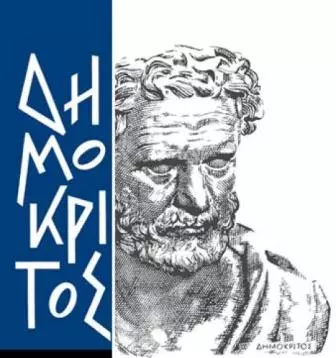
Foundation for Research and Technology – Hellas
The Institute of Computer Science (ICS) is one of the ten institutes of the Foundation for Research and Technology – Hellas (FORTH), a major national research centre partly funded by the General Secretariat for Research and Innovation of the Hellenic Ministry of Development and Investments. The mission of FORTH-ICS is to perform high quality basic and applied research, to promote education and training, and to contribute to the development of the Information Society, at a regional, national, and European level. Since its establishment in 1983, FORTH-ICS has had a long history and recognized tradition in conducting basic and applied research, and playing a leading role, in Greece and internationally, in the field of Information and Communication Technologies.

Foundation for Research and Technology – Hellas
The Institute of Electronic Structure and Lasers (IESL) was founded in Heraklion in 1983 and is one of the ten research institutes of the Foundation for Research and Technology – Hellas (FORTH), among the largest and most well-organized, equipped, and staffed research centers in the country. It serves as the main laser research center in Greece, conducting internationally pioneering basic and technological scientific research in two main thematic directions: Laser Science and Photonics, and Materials Science and Device Technology. Over the past 25 years, IESL has developed a multifaceted research activity (Photonics for Cultural Heritage) focused on the study and application of advanced laser methods and technology in the field of Cultural Heritage.”

The National Center for Research in Physical Sciences (NCRPS) ‘Demokritos’ is the largest multidisciplinary research center in the country, with 50 years of contribution to science and humanity. It is supervised by the General Secretariat for Research and Technology while maintaining administrative and financial autonomy. The mission of NCRPS ‘Demokritos’ is to conduct high-level basic and applied research and to develop competitive technology with the aim of promoting the social and economic development of the country.The Institute of Nuclear and Particle Physics (INPP) of NCRPS ‘Demokritos’ is tasked with experimental and theoretical research and scientific excellence in Astroparticle Physics, High-Energy Physics, Nuclear Physics and its applications, and innovation in fields related to the above directions. INPP operates the Tandem ion accelerator, which has been included in the National Roadmap for Research Infrastructures (2014) and supports the development of interdisciplinary analytical applications, with a focus on cultural heritage, the environment, energy, the study of new materials, and health, using ion beams.The X-ray Fluorescence (XRF) Laboratory of INPP specializes in the research and development of innovative laboratory and portable X-ray fluorescence spectrometers. In this direction, it has presented pioneering activity since the mid-1990s in on-site non-invasive elemental analysis of archaeological objects and works of art. It also transfers relevant technology and knowledge to public, private, and research entities operating in the field of culture.

The National Gallery was founded on April 10, 1900, by law that also provided for the position of the institution’s curator. The renowned painter Georgios Iakovidis was appointed to this position. On June 28, 1900, the operational regulations were established. Its initial collections came from the Polytechnic School and the University. Significant donations were added to these collections shortly thereafter.
Today, the National Gallery houses more than 20,000 works of painting, sculpture, engraving, and other forms of art. It represents the treasury of modern Greek artistic creation, covering a period from the post-Byzantine era to the present day.
It also possesses a notable collection of Western European painting. In 1954, the National Gallery merged with the legacy of Alexandros Soutsos, from which it derives its dual name.
The institutional role of the National Gallery is to collect, preserve, conserve, study, and exhibit works of art, with the aim of cultivating aesthetic appreciation among the public, providing lifelong education through art, and promoting self-awareness among Greeks through the help of art history, which symbolically expresses the national life.
The successive directors of the National Gallery have contributed to its organization, operation, enrichment of its collections, and finding a permanent housing solution.
For more information:

The company offers a wide range of specialized solutions for financial institutions, petroleum and retail companies, as well as organizations in the public and private sectors. The company creates, implements, and supports products, solutions, and services in the areas of Transaction Automation, Electronic Payments, Bank Branch Automation, Banking Applications, Retail Store Automation, Integrated Telecommunications Solutions, Data Security Systems, and Specialized IT Solutions for businesses in the private and public sectors.

up2metric Ltd. is a startup company that develops innovative solutions and provides specialized engineering services through the integration of cutting-edge technologies in the fields of Computer Vision, Photogrammetry, Remote Sensing, Metrology, and Earth Observation. up2metric specializes in data collection from various sensors, their processing, and the analysis of the derived information.

